Le 1er décembre 2022, deux instruments de la maturité artistique de Jean Petitcolas seront présentés aux enchères – un violon et un alto -, accompagnés d’un ensemble de modèles anciens de sa collection, de la main de François Lupot II, Hippolyte Lamy, Jean Joseph Martin ou encore Vigneron Père. A cette occasion, Vichy Enchères tenait à rendre hommage à ce luthier, médaille d’or du Grand Prix de Liège en 1960. Il fut le dernier mirecurtien de naissance à s’installer à Paris et fit partie des pionniers du renouveau de la lutherie moderne française. De ses débuts troublés par la guerre, en passant par sa formation chez de grandes figures de la lutherie jusqu’à son succès : lumière sur ce brillant luthier injustement resté dans l’ombre de certains de ses contemporains.
Jean Petitcolas est né à Mirecourt en 1924, ville dans laquelle était implantée sa famille depuis plusieurs générations. Il commença son apprentissage en 1940 chez Amédée Dieudonné, ami de son oncle Georges Petitcolas, qui travaillait chez Emile Français, le luthier du Conservatoire de Musique de Paris. Ces années de formation auprès du maître étaient aussi celles de l’Occupation et, début 1944 pour échapper au Service du Travail Obligatoire (S.T.O), Jean Petitcolas tenta de passer en Suisse au cours d’une expédition par la montagne avec son frère Robert et deux amis, dans le but de rejoindre le Général de Gaulle à Londres.
Refoulé en France, il se réfugia dans une ferme du Doubs et revint à Mirecourt pour rallier le maquis des bois de Rouvres, puis l’armée régulière où, avec la 2ème Division Blindée, il participa à la campagne des Vosges, d’Alsace et Rhin et Danube. Démobilisé fin 1945, Jean Petitcolas renoua avec la lutherie et entra en stage chez George Apparut, avant de gagner Paris moins d’un an plus tard, où il eut comme premier contact le luthier Maurice Collenot – un autre ami de son oncle établi rue Labat -, qui l’aida à se loger dans la même rue et lui donna du travail, avant qu’il ne rejoigne Georges Petitcolas rue de Madrid, dans le quartier du Conservatoire.
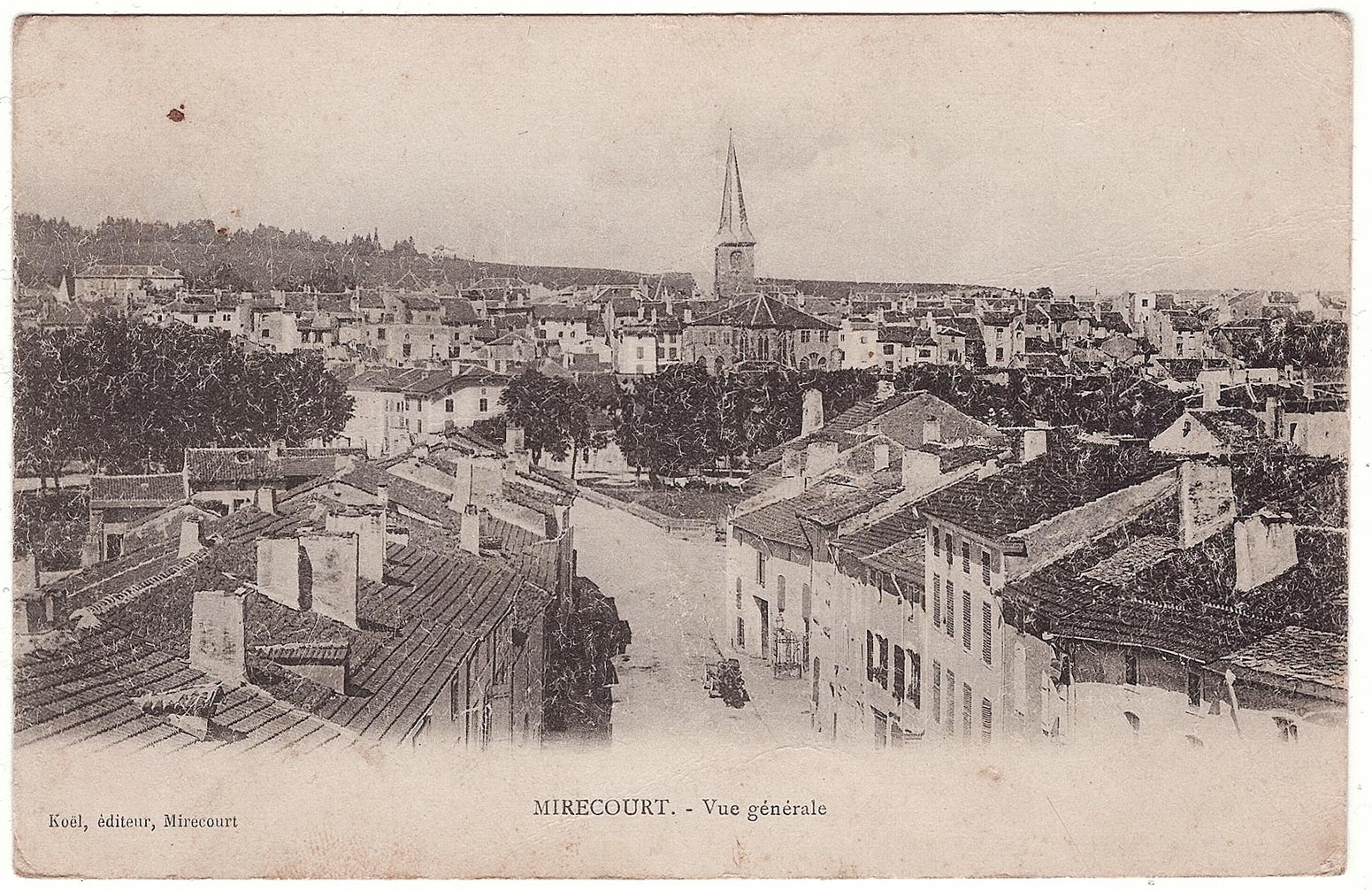
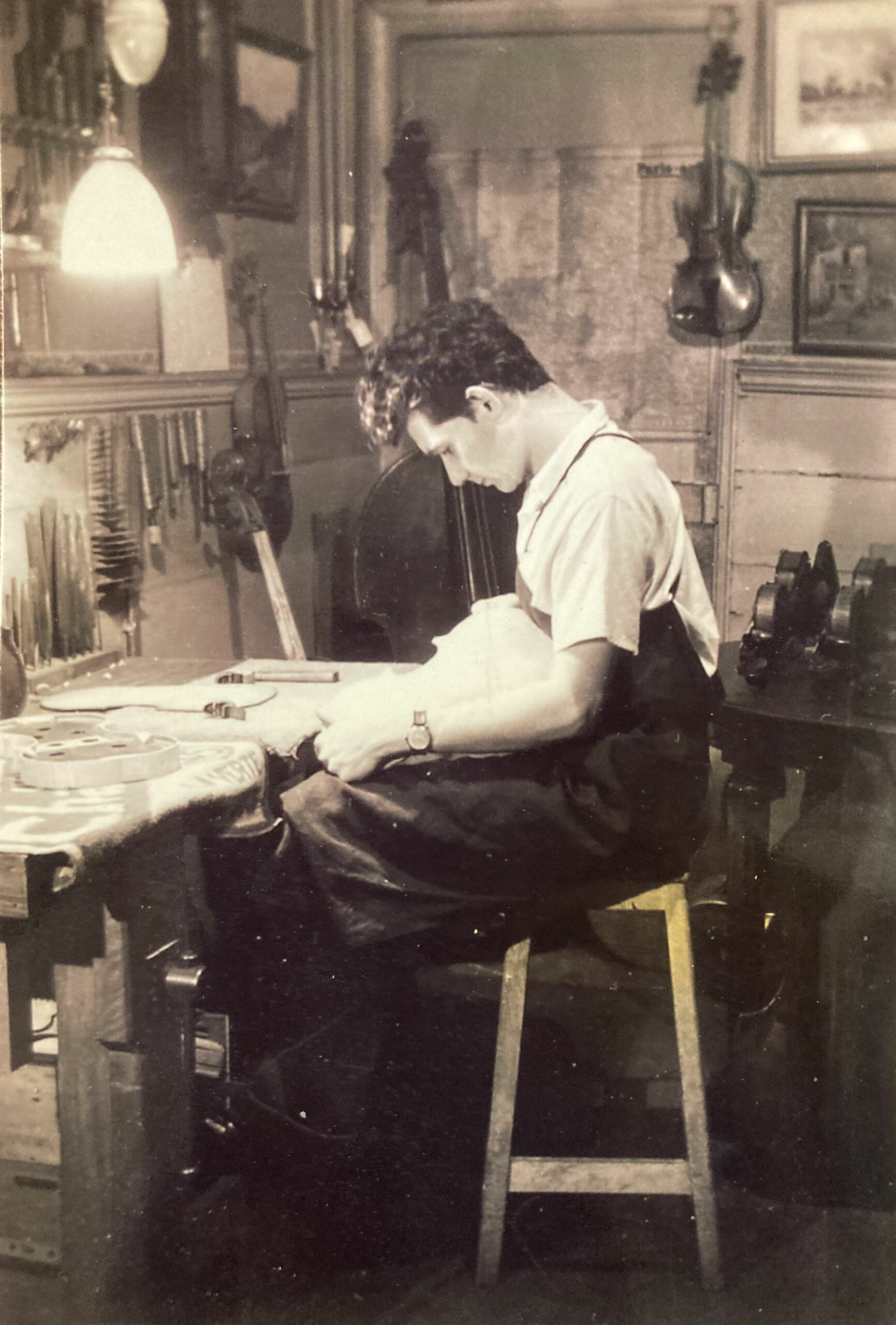
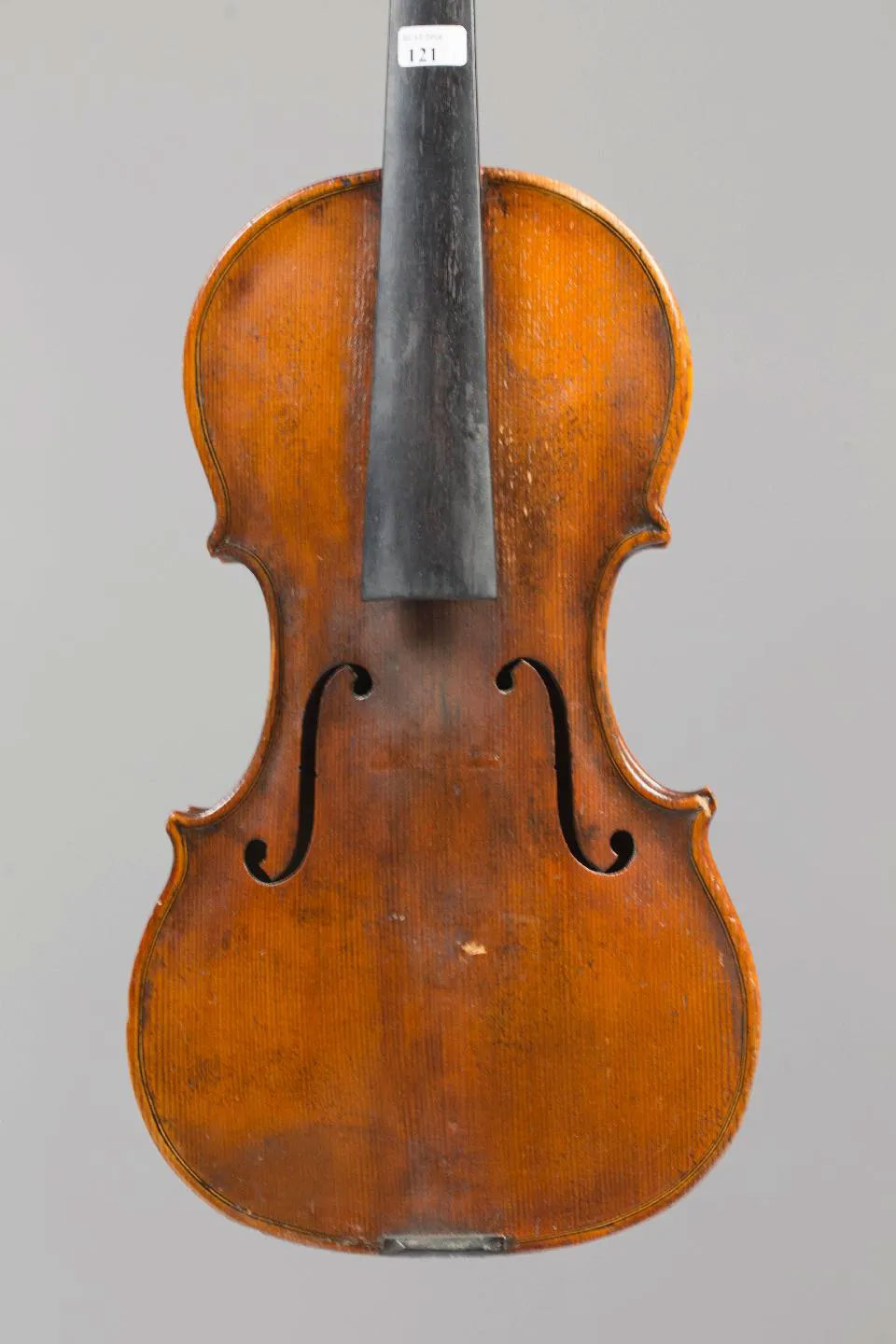
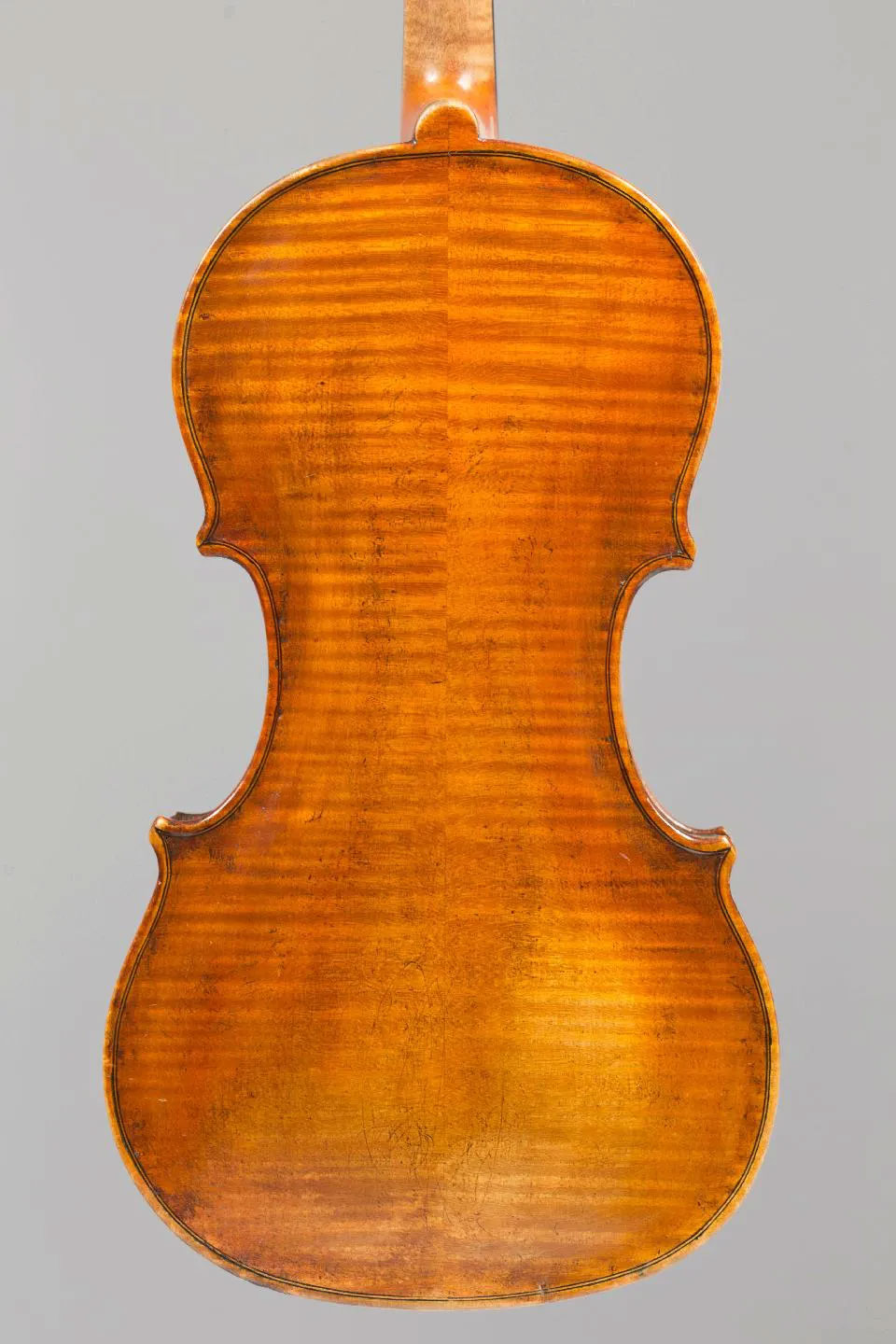
De 1940 à 1945, Jean Petitcolas fit ainsi un apprentissage entrecoupé par la guerre chez Amédée Dieudonné. Il garda de bons souvenirs de ces années, malgré le caractère exigeant de son maître, qui n’hésitait pas à détruire certaines pièces de ses instruments pour l’encourager à la perfection. La confiance arriva lorsque le maître le chargea de remplacer son second Marcel Thomassin, absent quelques jours, pour le filetage des instruments. S’estimant lui-même trop âgé, Dieudonné lui fit ainsi l’honneur d’accéder aux tâches nobles, alors qu’il n’avait que deux années d’atelier. Ce souvenir dit beaucoup de l’excellente maîtrise de Petitcolas et de son savoir-faire rare et précoce. Cet apprentissage auprès d’Amédée Dieudonné marqua durablement la carrière et la production de Jean Petitcolas, qui hérita en partie des techniques de son maître, comme le laisse percevoir une certaine parenté stylistique entre leurs instruments.
A la fin de la guerre, Jean Petitcolas regagna Mirecourt et entra en stage pour l’année 1946 chez Georges Apparut, ce qui orienta également sa production. L’atelier d’Apparut était de taille modeste et ne comprenait que deux-trois luthiers et un seul apprenti. Que Jean Petitcolas put y travailler témoigne là-encore d’un talent précoce et de compétences reconnues par les maîtres de l’époque.
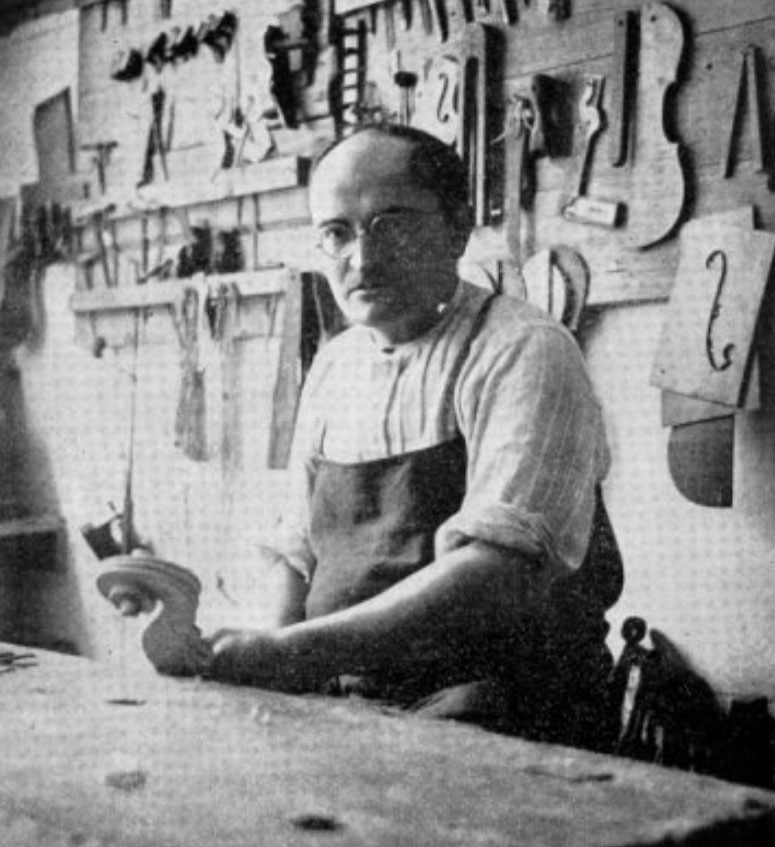
A la fin de son stage chez Georges Apparut, Jean Petitcolas entra dans l’atelier d’Emile Français (Caressa & Francais jusqu’en 1938), qui était le luthier du Conservatoire National de Musique de Paris, pour qui travaillait déjà son oncle Georges Petitcolas. Jean fit réellement ses armes chez Emile Français, progressant dans la restauration d’instruments de grands maîtres français et italiens et copiant des modèles renommés de violons, altos et violoncelles. Ce travail lui permit d’aiguiser son œil et de perfectionner sa technique. Jean Petitcolas est d’ailleurs souvent cité parmi les plus importants et renommés luthiers ayant travaillé pour Emile Français, au côté de Walter Hamma ou René Quenoil.
Jean Petitcolas quitta l’atelier en 1951 pour s’établir à son compte, mais il fut vite rappelé par Emile Français en 1955 – suite à la mort de son oncle – qui le sollicitait pour en assurer le remplacement. Ne souhaitant pas abandonner son activité personnelle, ce dernier accepta de lui consacrer uniquement ses matinées.
Cet événement confirme à nouveau la confiance que portaient en lui les acteurs majeurs de la lutherie de l’époque, que ce soit à Mirecourt ou Paris. Néanmoins, faute d’une grande notoriété, sa clientèle resta longtemps trop faible et pour pallier ce problème, Jean Petitcolas décida de participer à un concours…
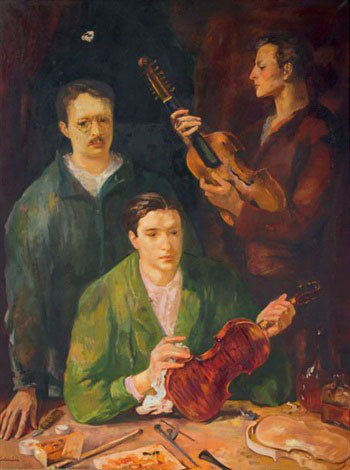
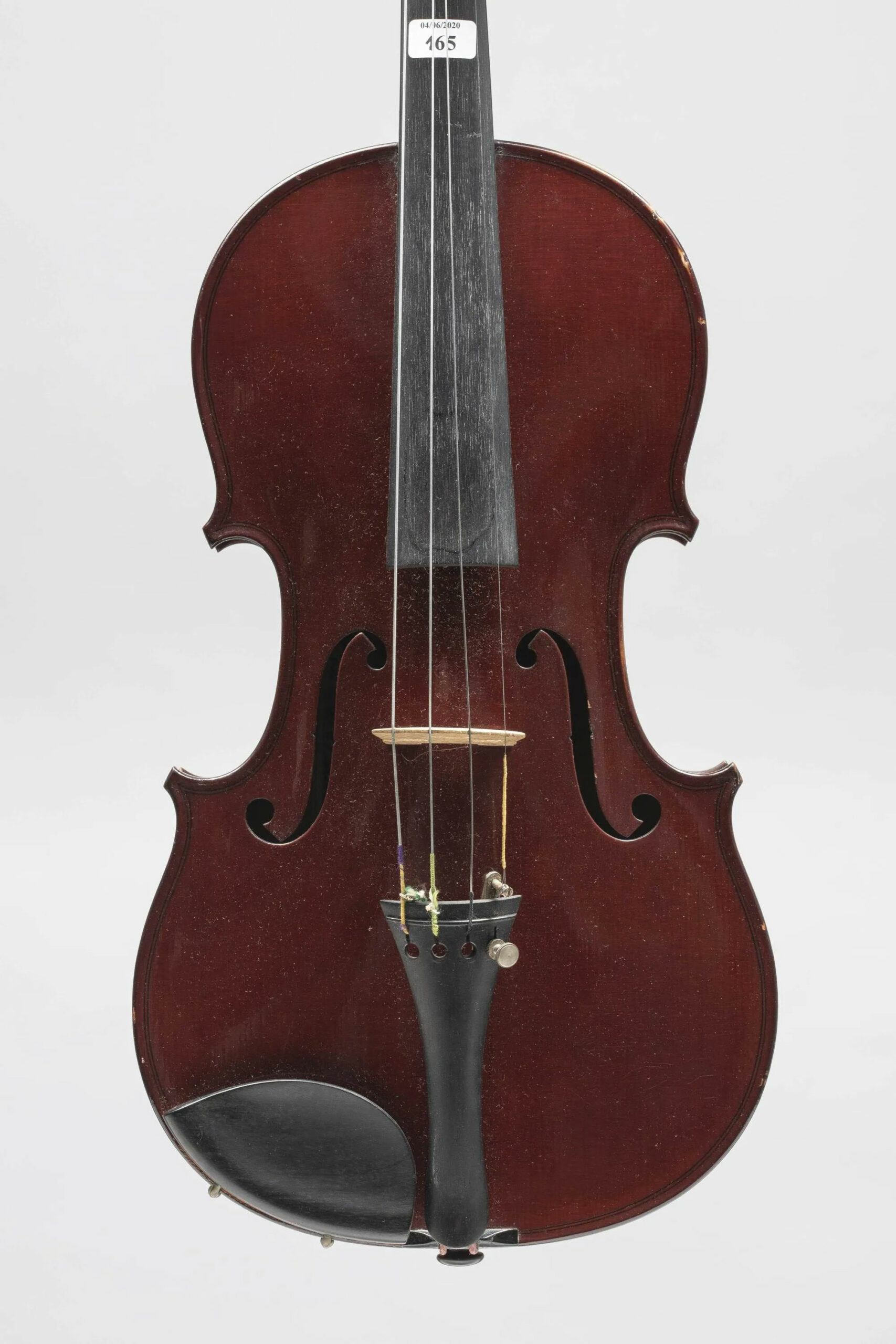
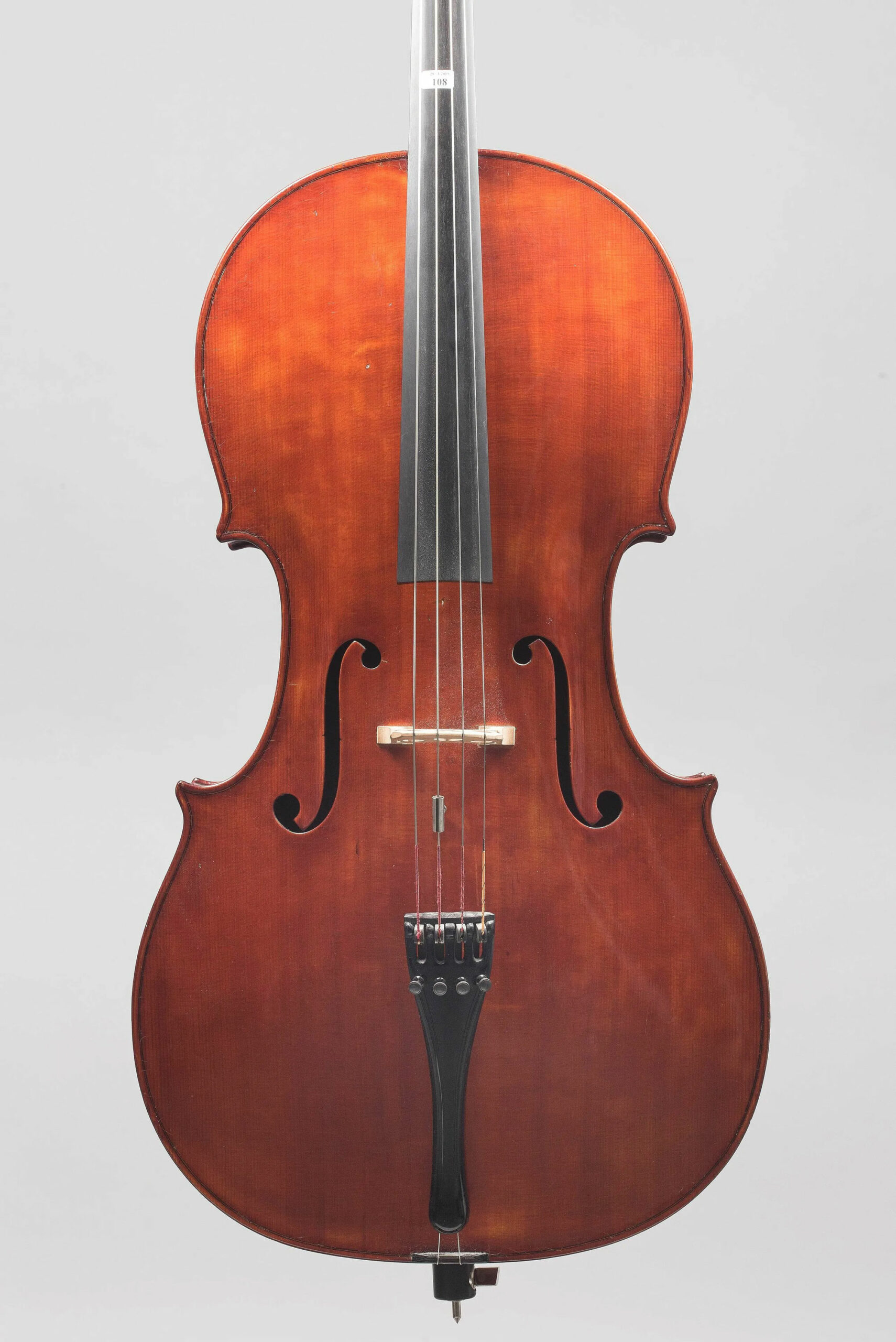
Pour se faire connaître, Jean Petitcolas s’inscrivit ainsi à son premier concours en 1960, et non le moindre, puisqu’il choisit le prestigieux Concours international de Quatuor à Cordes de Liège, instauré par Louis Poulet, qui se tenait dans la ville tous les ans depuis 1951. Placé sous le haut patronage de Sa Majesté la Reine Élisabeth de Belgique, ce concours avait pour objectif de mettre en valeur la forme du quatuor à cordes dans la musique de chambre. Malgré 11 pays et 30 participants en concurrence, Jean Petitcolas remporta le premier prix et la médaille d’or, succédant ainsi à Jean Bauer (1954) et Pierre Gaggini (1957). La médaille d’argent fut, quant à elle, décernée au célèbre luthier italien Sesto Rocchi.
Cette décoration lui valut une renommée mondiale qui lui permit de s’établir dans le quartier des luthiers parisiens, dans le 8ème arrondissement, près de la rue de Rome, au 41 rue de Liège. A partir de cette date, sa clientèle se développa et fut essentiellement composée de musiciens professionnels en poste dans les grands orchestres européens. En 1963, 1966 et 1969, il fut également appelé à participer au jury du concours qui lui avait valu sa consécration. Le succès ne s’arrêta pas là, puisqu’il fut fait Chevalier des Arts et des Lettres en 1965, nommé meilleur ouvrier de France en 1972 et qu’il obtint la médaille de bronze de la ville de Paris en 1982, des mains de Jacques Chirac. Le violon de la vente du 1er décembre 2022, réalisé en 1967, est un beau témoignage de ces années de consécration internationale pour Jean Petitcolas.
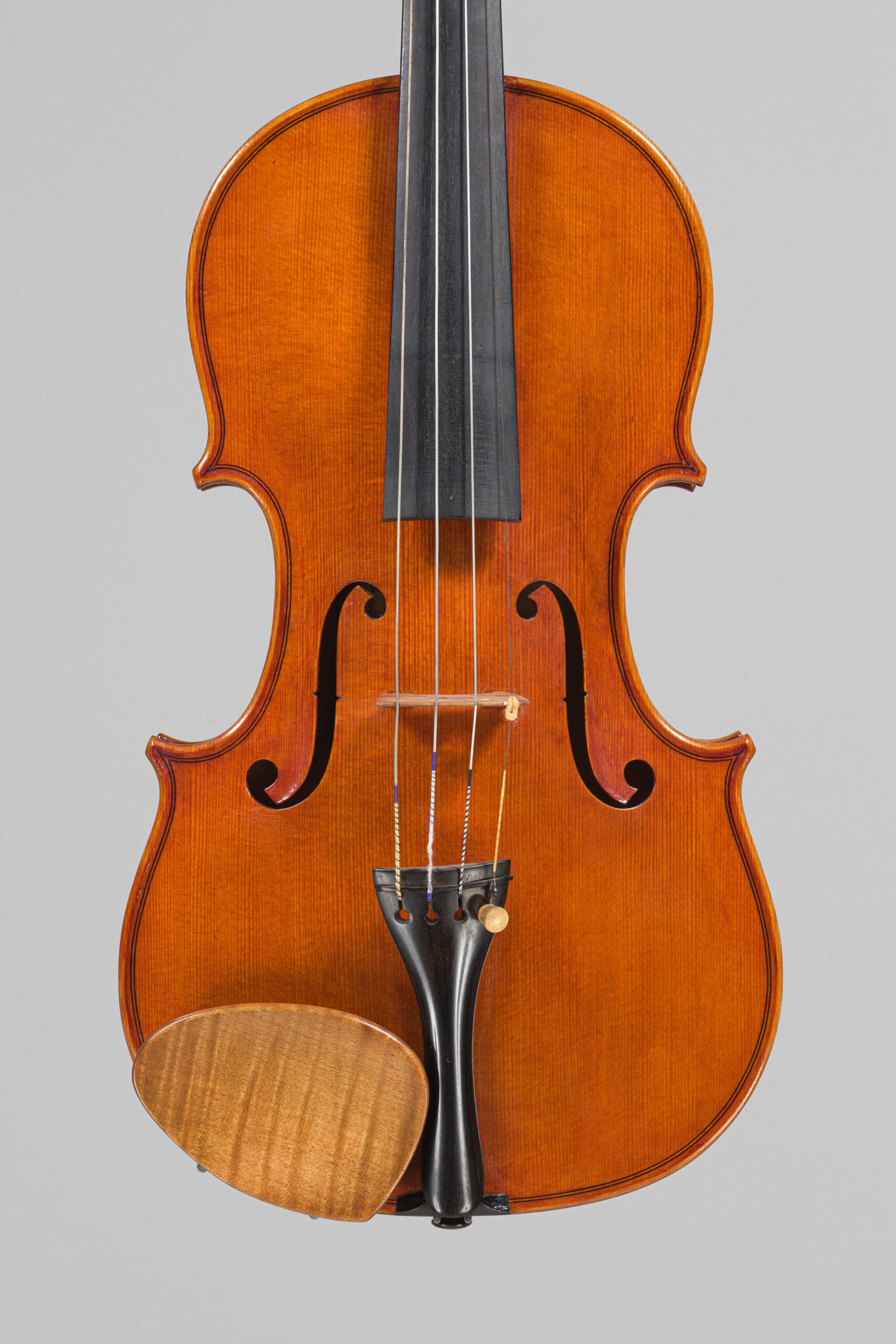
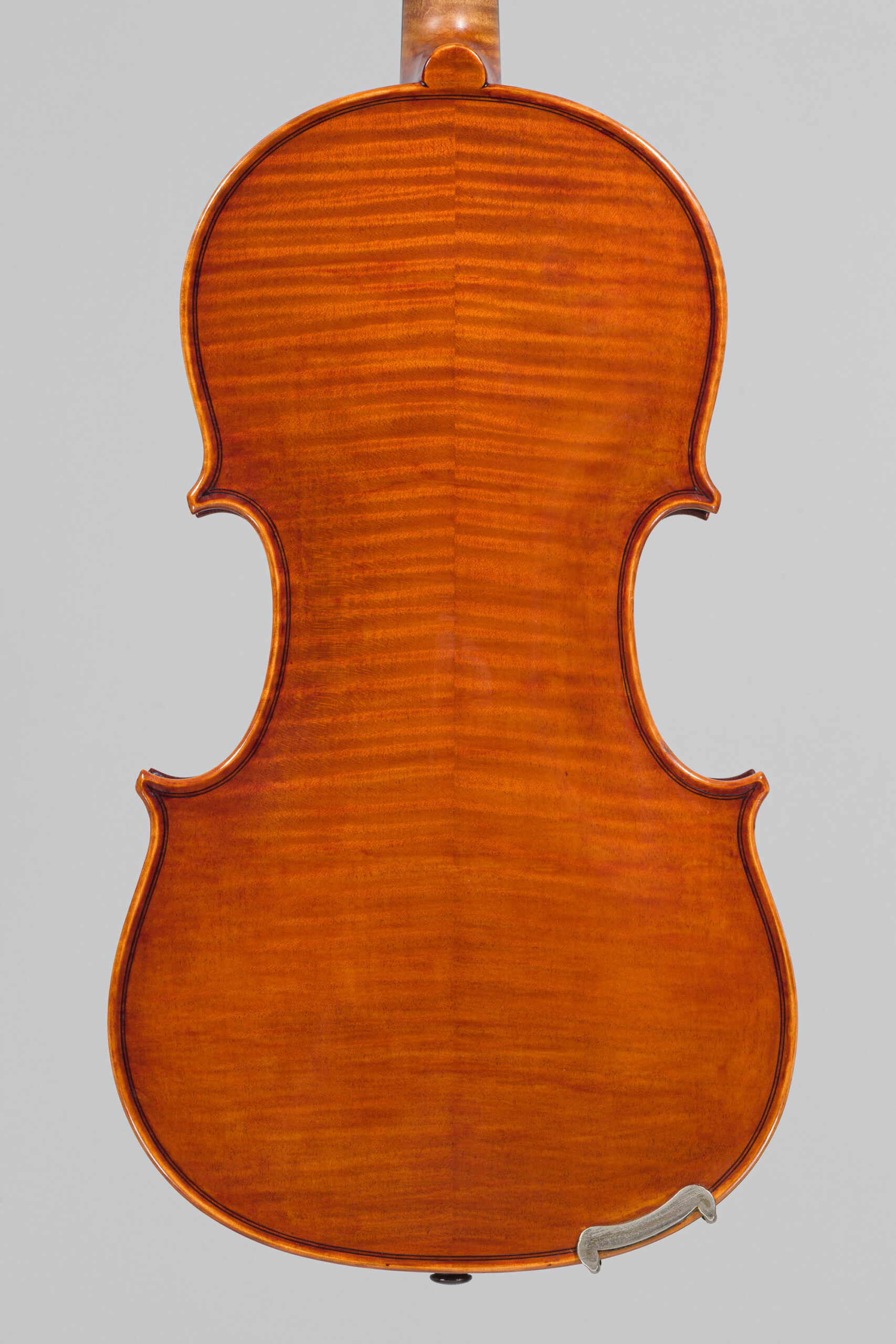
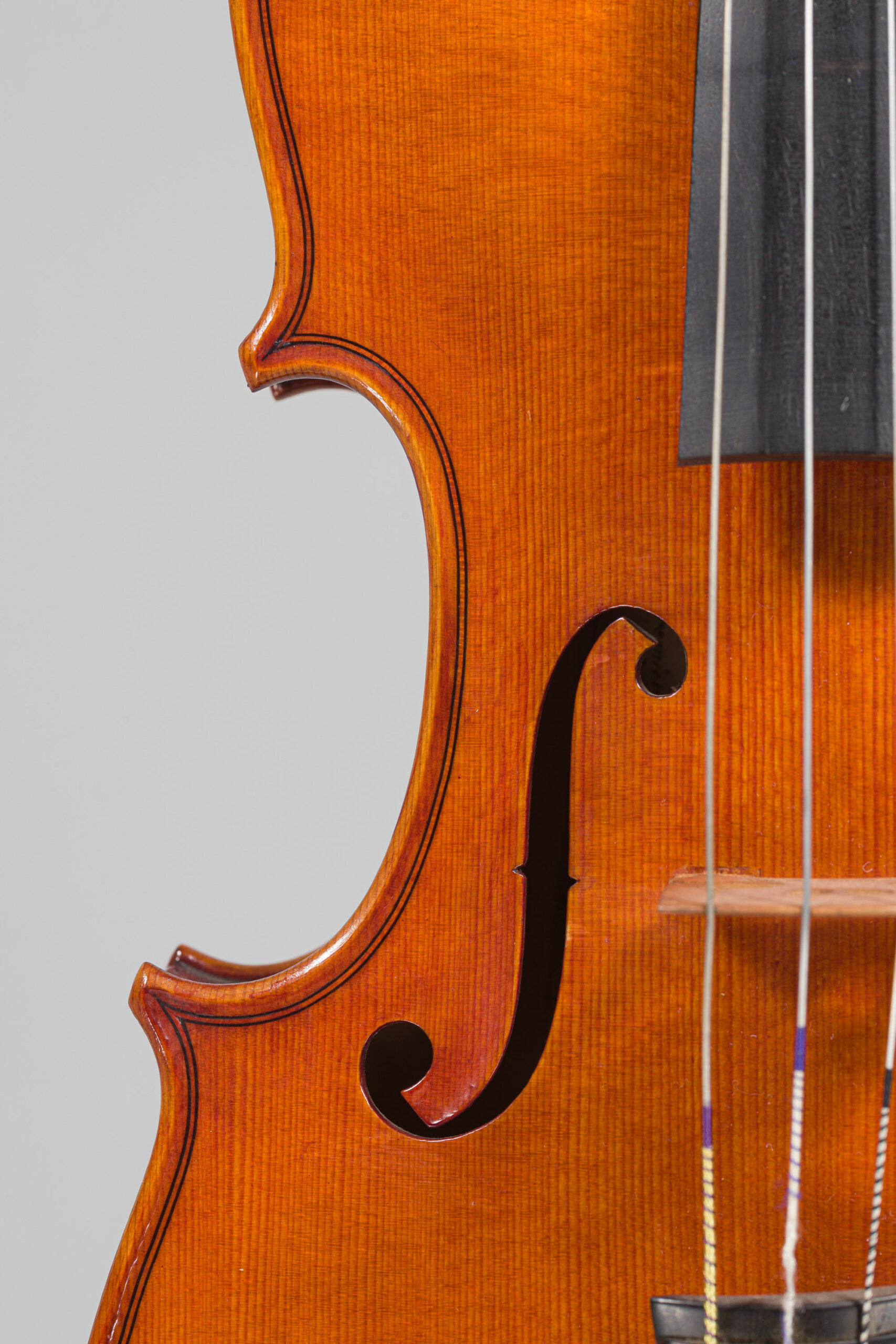
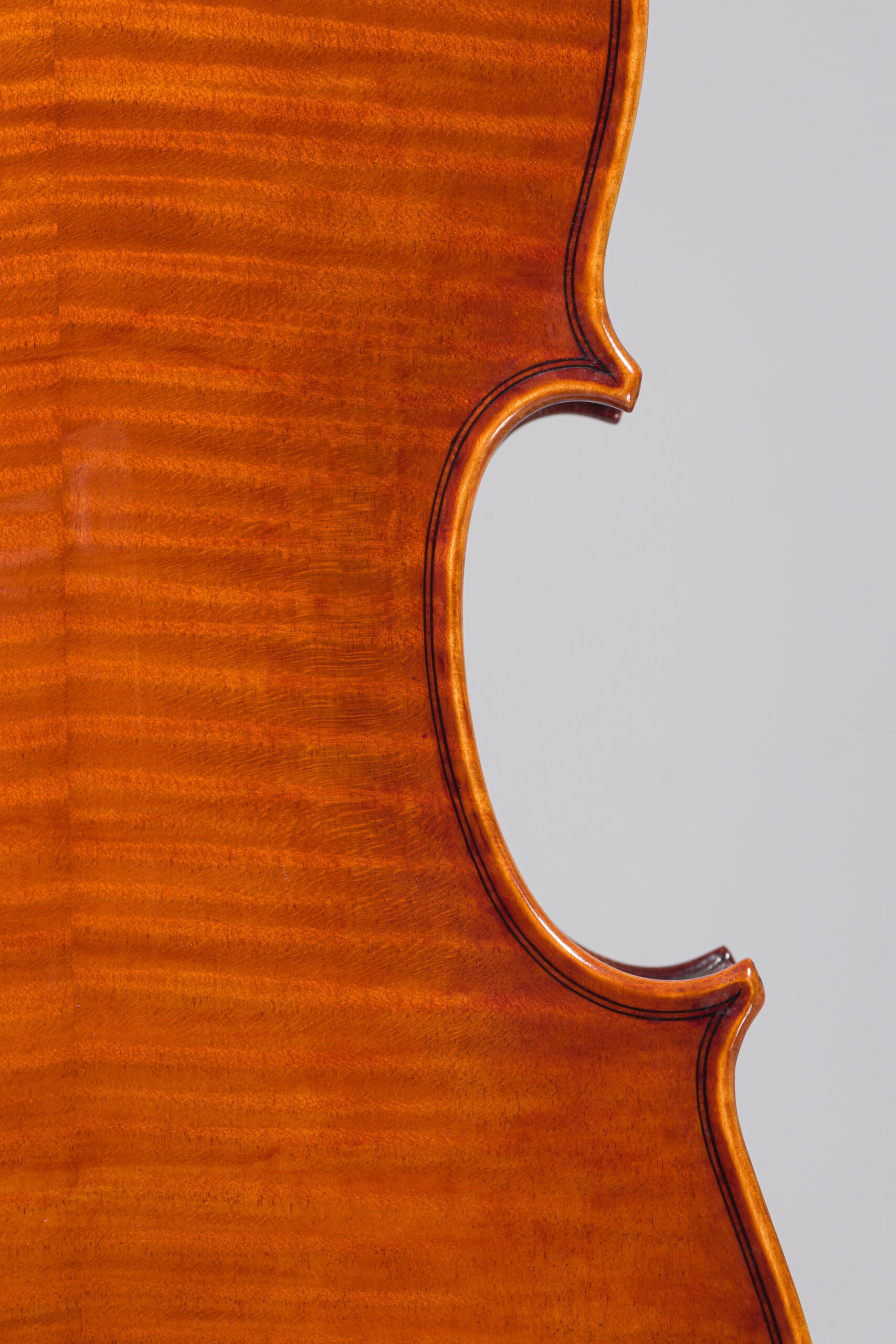
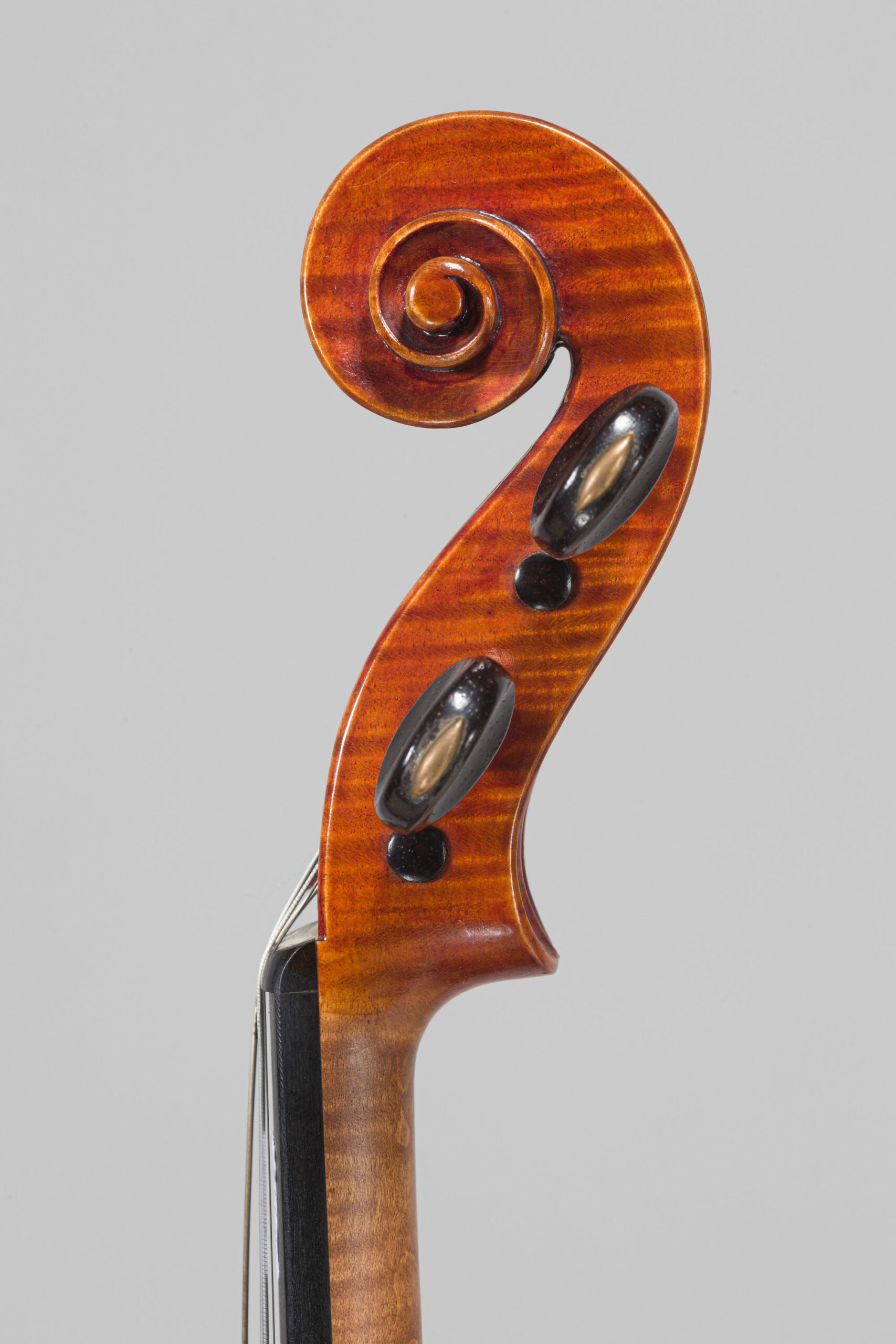
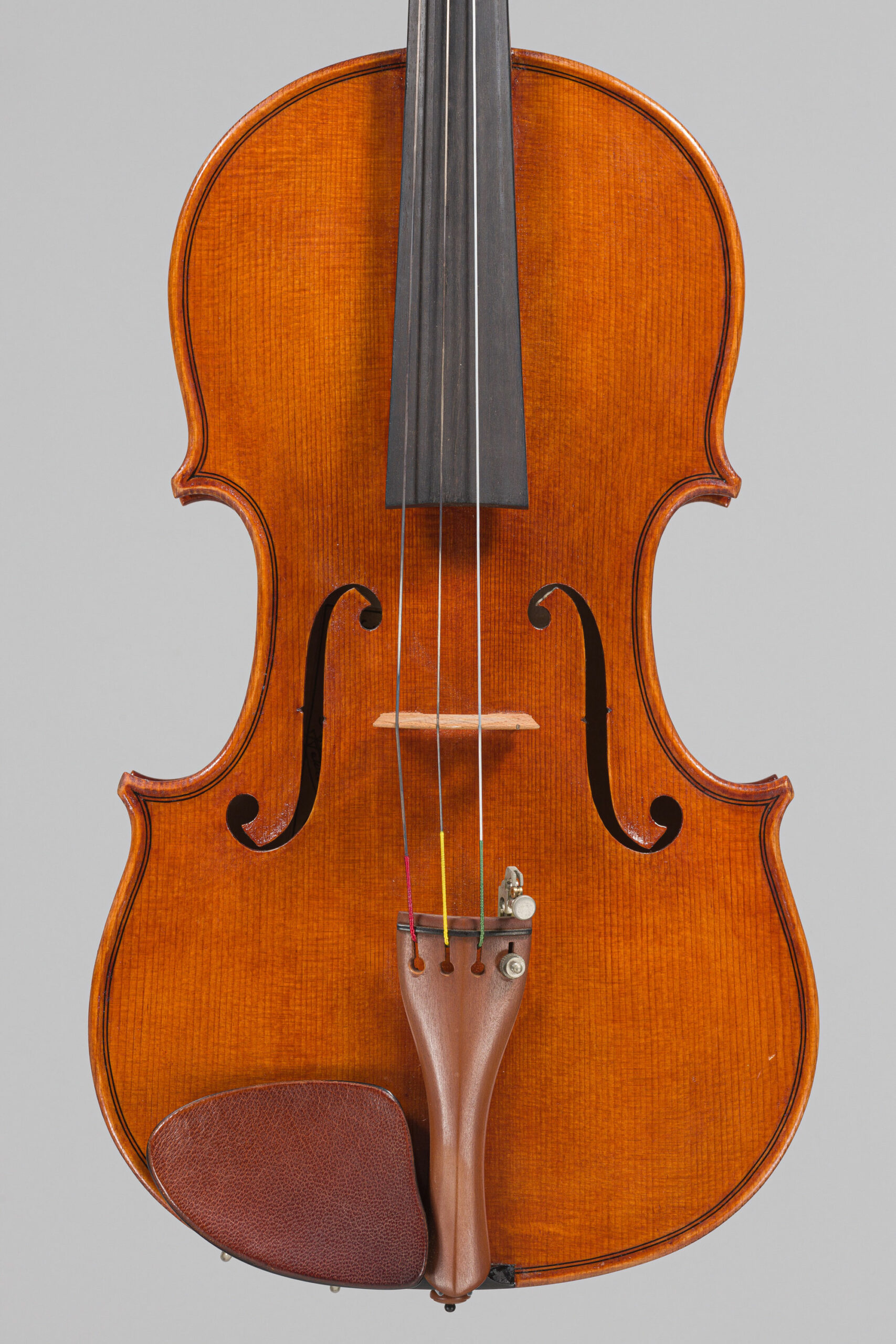
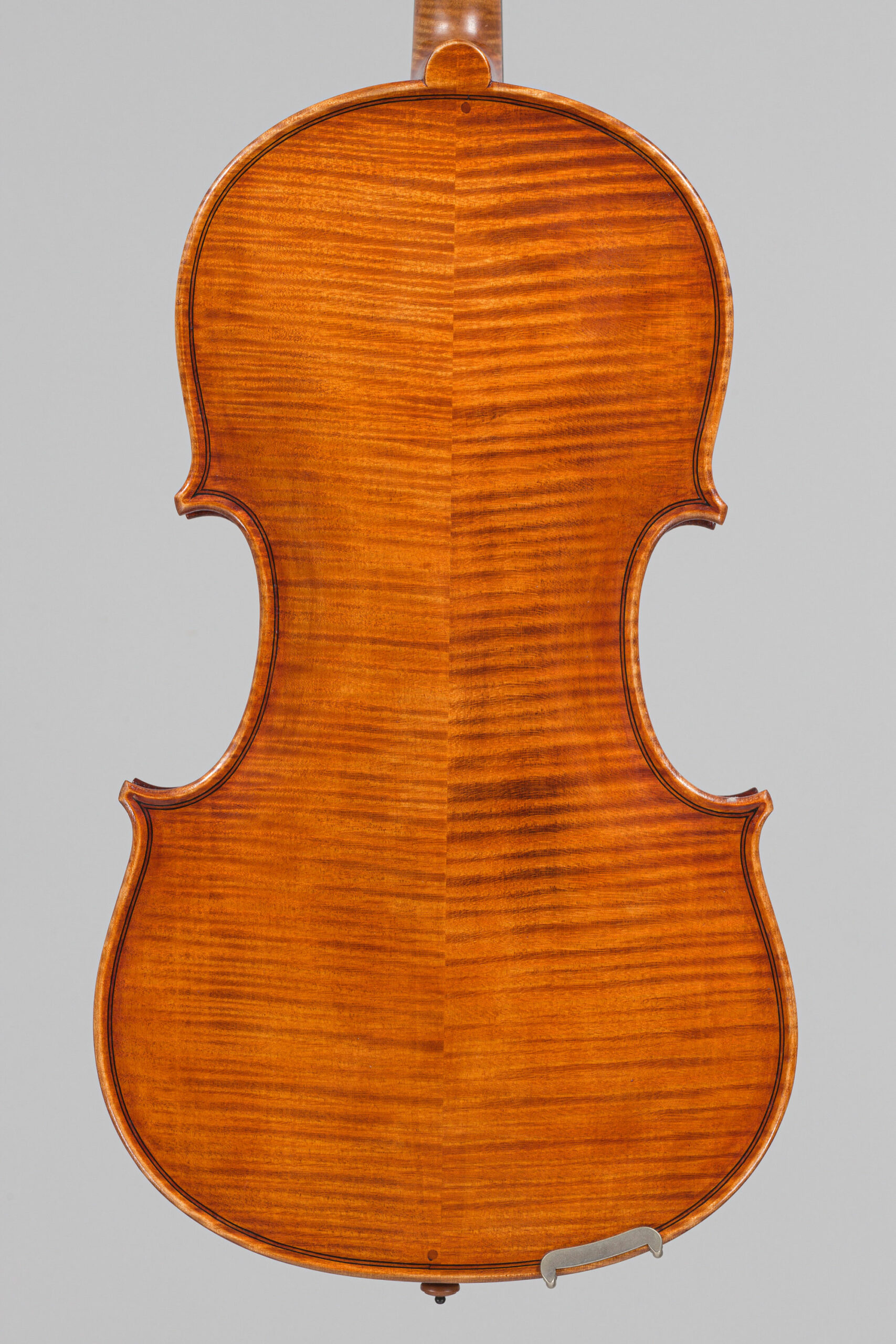
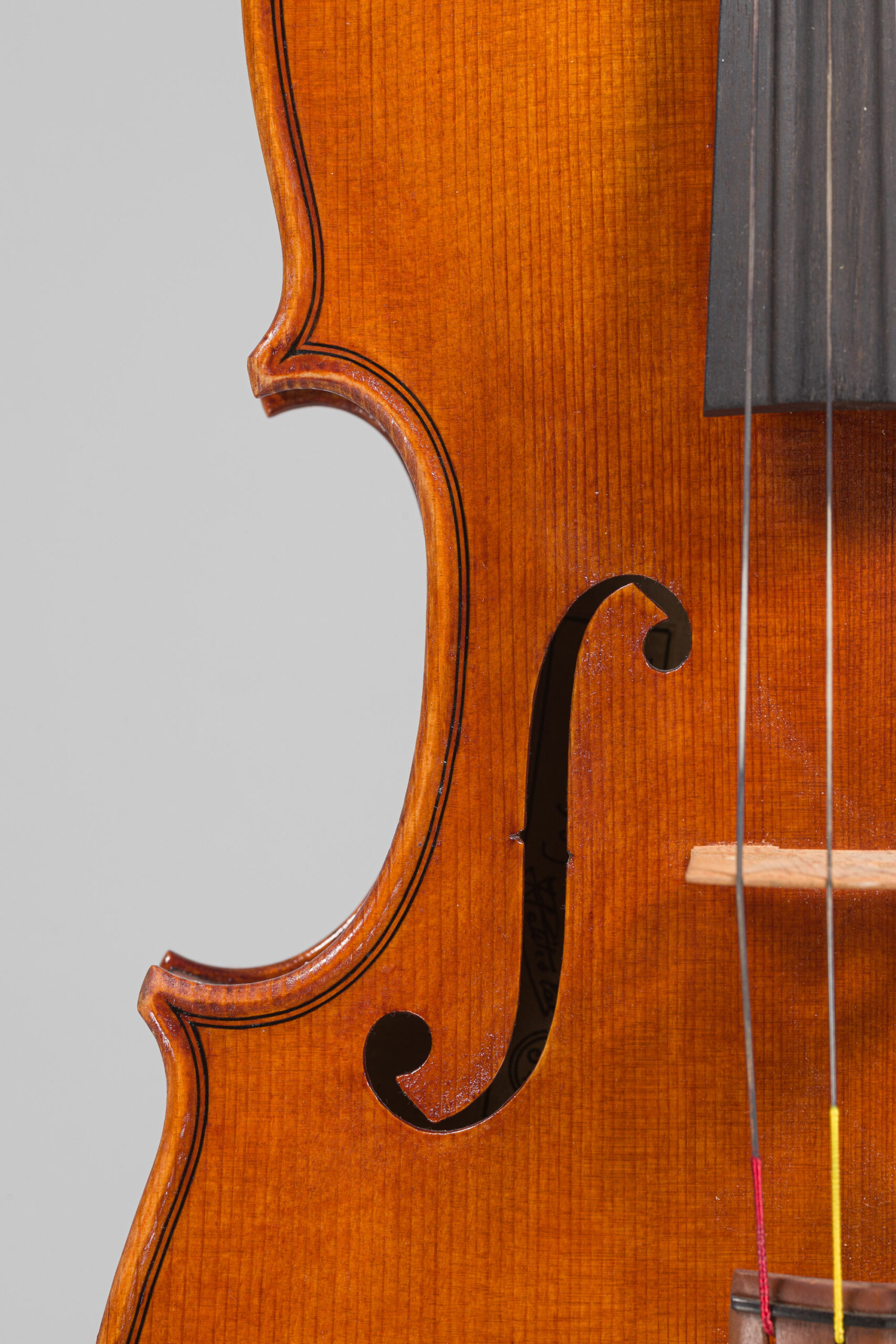
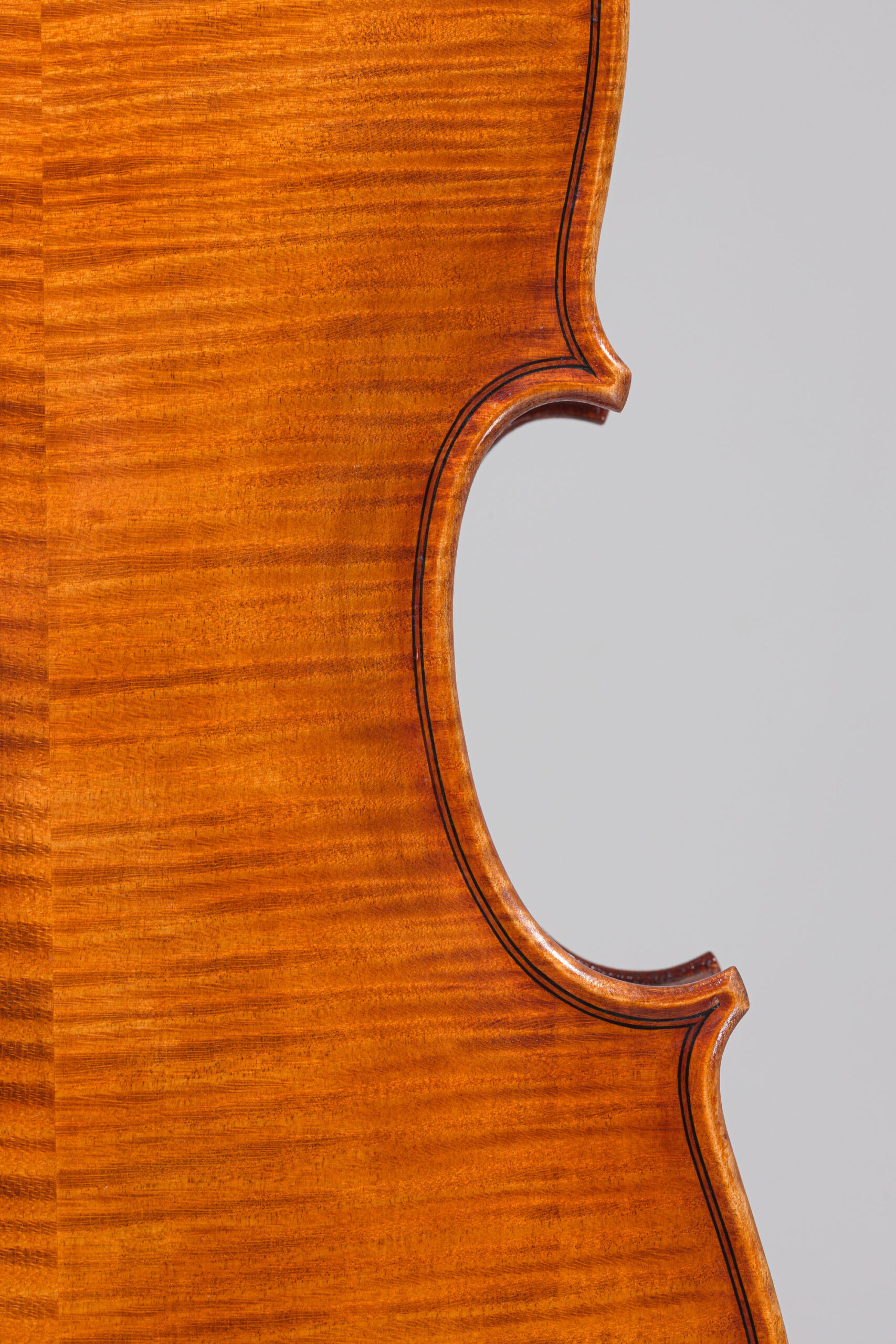
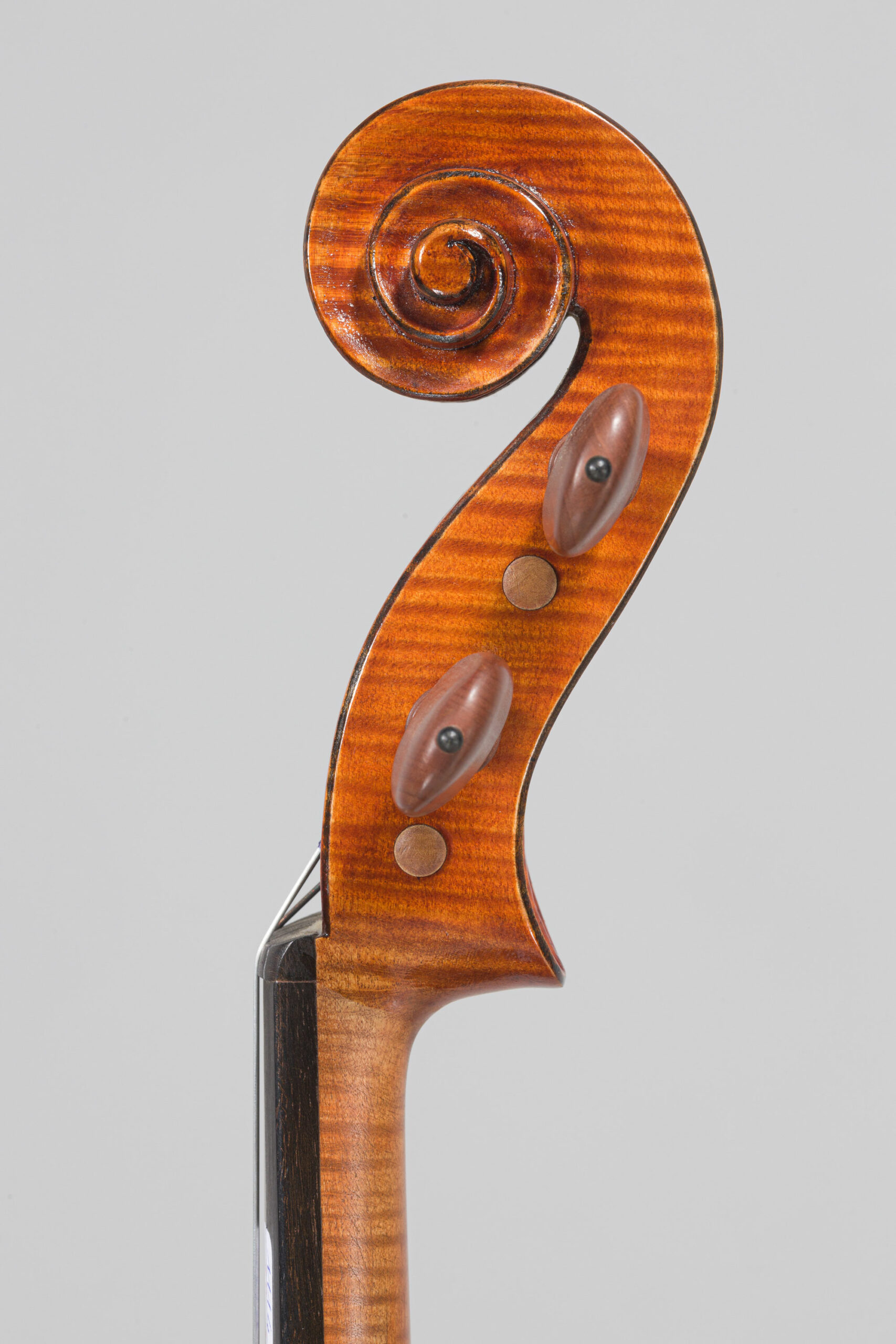
En outre, ce succès lui permit d’acheter de meilleures fournitures et notamment des bois anciens de grande qualité, dont témoignent le violon et l’alto en vente à Vichy Enchères le 1er décembre 2022. Jean Petitcolas constitua également une belle collection d’instruments de maîtres, dont un ensemble présenté à Vichy Enchères comprenant de beaux archets de violon de François Lupot II, d’Hippolyte Lamy, de Jean Joseph Martin ou encore de Vigneron Père.
Pour tous, Jean Petitcolas laisse le souvenir d’un luthier talentueux, apprécié aussi bien de ses clients que de ses collègues. Toujours, il laissa les portes de son atelier ouvertes aux jeunes luthiers désireux de conseils, même s’il fut malheureusement contraint de décliner beaucoup de demandes de stage, faute de place dans son atelier. A l’annonce de sa disparition en 2021, plusieurs luthiers ont tenu à lui rendre hommage et à rappeler que le talent de Jean Petitcolas n’avait d’égal que sa gentillesse.
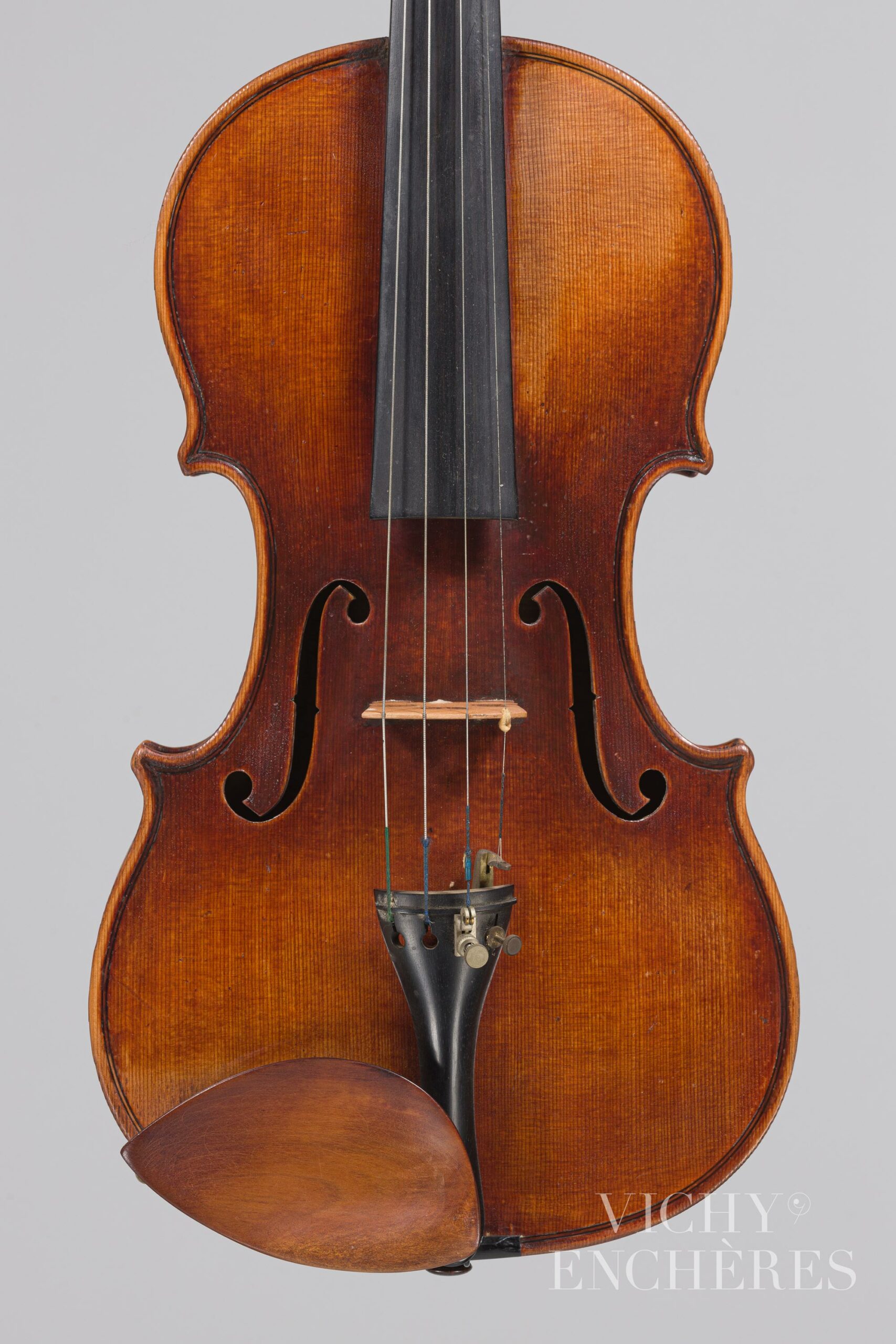
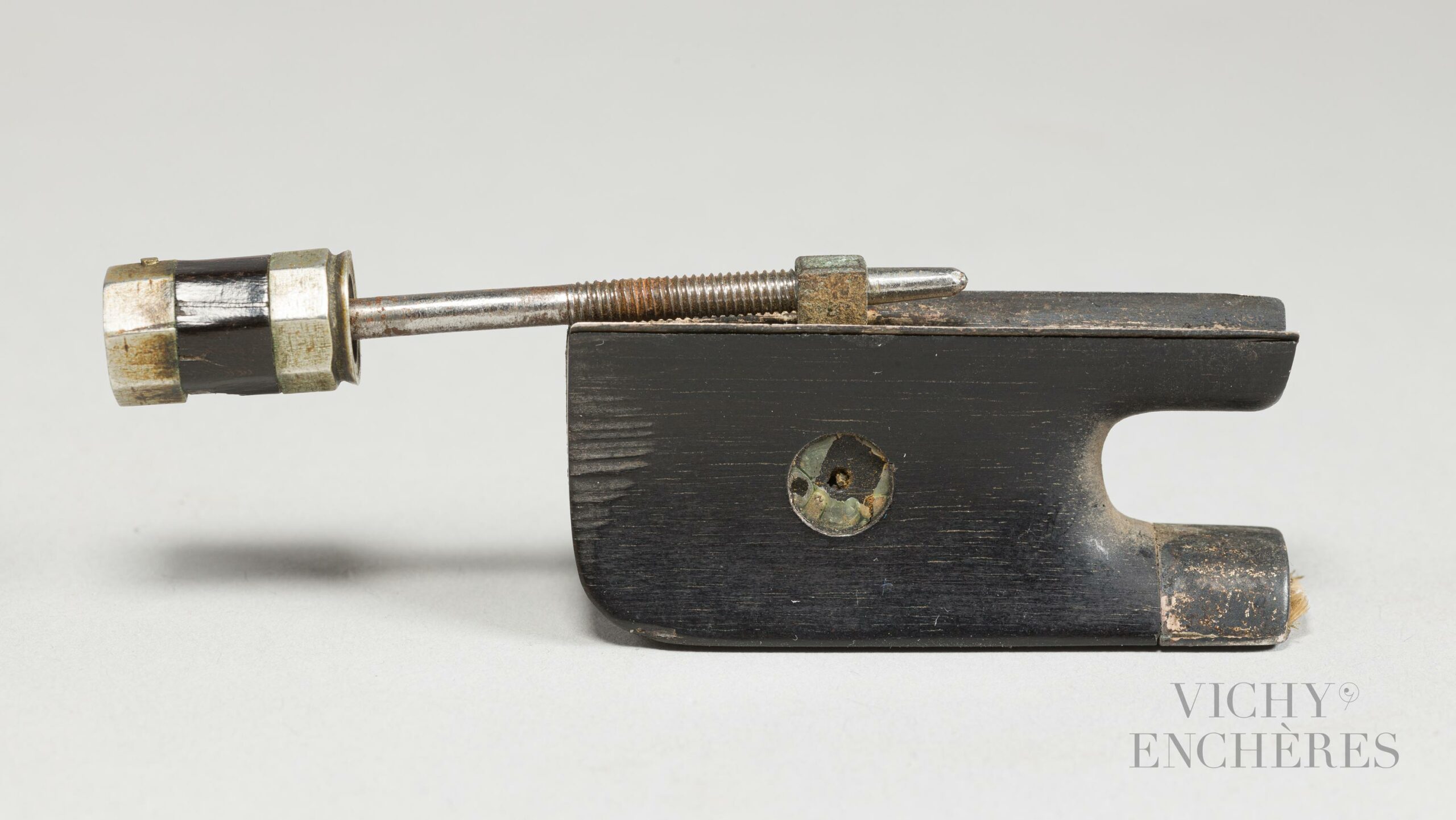
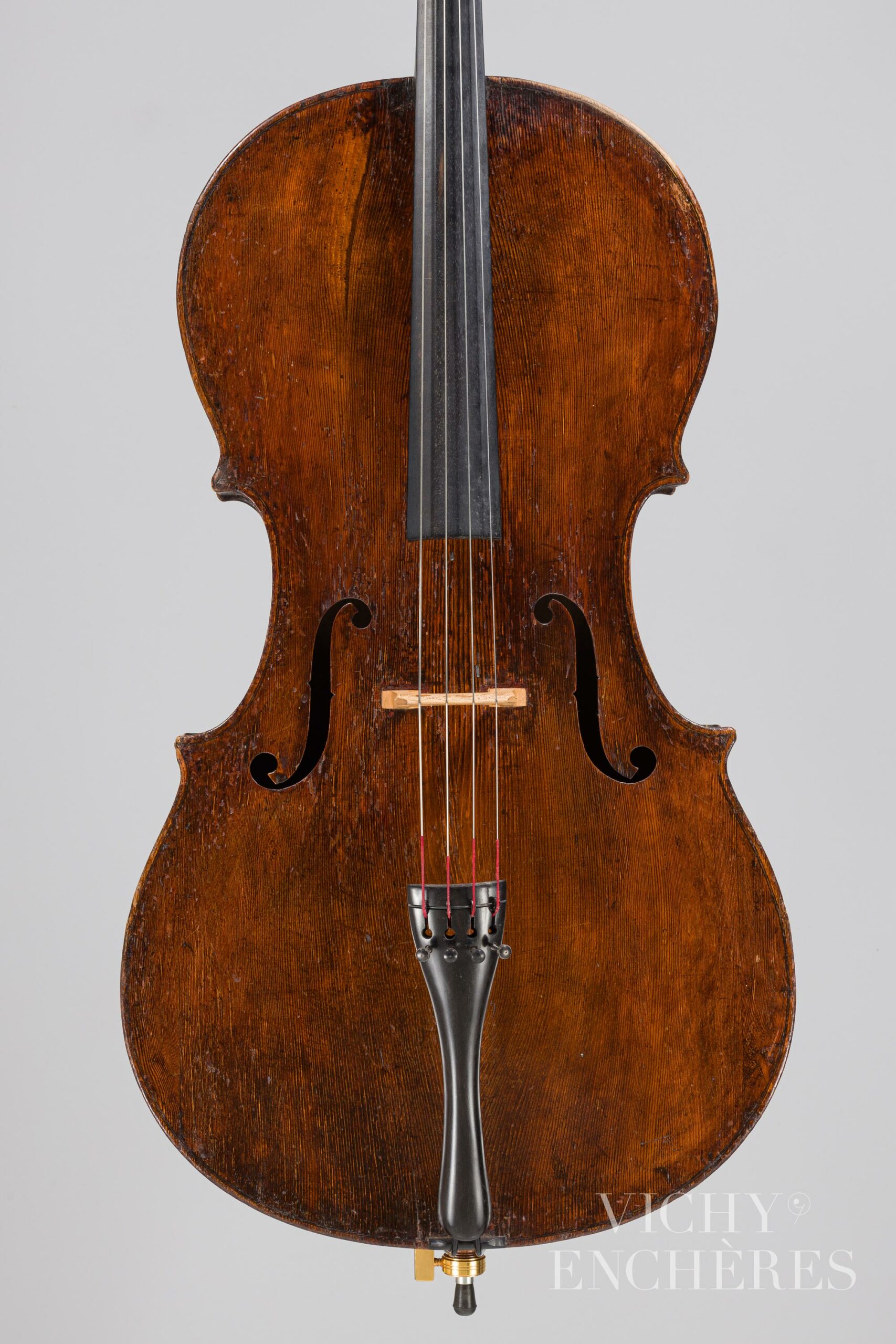
Nous vous donnons rendez-vous le 1er décembre 2022, en salle ou en live, pour assister à la vente des instruments de Jean Petitcolas.
On 1 December 2022, a violin and a viola made by Jean Petitcolas during his mature period will be presented at auction, along with a set of bows from his collection, including by François Lupot II, Hippolyte Lamy, Jean Joseph Martin and Vigneron Père. Vichy Enchères wanted to take this opportunity to pay tribute to this violin maker and gold medallist at the Grand Prix de Liège in 1960. He was the last maker from Mirecourt to settle in Paris and was one of the key figures of the revival of modern French violin making. We’ll cast a light on his early years, which were interrupted by the war, his training with important figures of violin making, and his success as a maker; he was a brilliant maker, who remained in the shadow of some of his contemporaries.
Jean Petitcolas was born in 1924 in Mirecourt, a town in which his family had lived for several generations. He began his apprenticeship in 1940 with Amédée Dieudonné, a friend of his uncle Georges Petitcolas, who worked with Emile Français, maker for the Conservatoire de Musique de Paris. These formative years with the master coincided with the German occupation of France and, at the beginning of 1944, to escape the Service du Travail Obligatoire (S.T.O.), Jean Petitcolas tried to cross into Switzerland during a mountain expedition with his brother Robert and two friends, with the aim of joining General de Gaulle in London.
After failing in his attempt, he temporarily took refuge in a farm in the Doubs department, and returned to Mirecourt to join the Maquis des Bois de Rouvres resistance combat unit, then the regular army with the 2nd Armoured Division, with which he took part in the campaign of the Vosges, Alsace and Rhine and Danube. He was released at the end of 1945, and returned to violin making. He started an apprenticeship with George Apparut, before going to Paris less than a year later, where he came into contact with the violin maker Maurice Collenot, another friend of his uncle, established rue Labat. Collenot employed him in his workshop, and helped him find accommodation on the same street. Petitcolas later joined his uncle Georges at rue de Madrid, in the Conservatoire district.




From 1940 to 1945, Jean Petitcolas did an apprenticeship with Amédée Dieudonné, which was interrupted by the war. He had fond memories of those years, despite the demanding personality of his master, who could destroy parts of instruments which were deemed unsatisfactory, in order to encourage him to strive for perfection. He grew in confidence when Dieudonné asked him to replace his right hand man, Marcel Thomassin, who was absent for a few days, to carry out the purfling of the instruments. Considering himself too old, Dieudonné charged Petitcolas of this skilled task, after he had only two years of experience in the workshop. This anecdote says a lot about the excellent and precocious talent of Petitcolas. This apprenticeship had a lasting impact on his career and output, and he continued to use his master’s techniques after he left his workshop, as evidenced by a certain stylistic resemblance between instruments by the two makers.
At the end of the war, Jean Petitcolas returned to Mirecourt, and in 1946 began an apprenticeship with Georges Apparut, which also influenced his own making. Apparut’s workshop was modest in size and included only two or three makers and one apprentice. The fact that Jean Petitcolas worked there again demonstrates the recognition he gained for his precocious talent and skills.

At the end of his apprenticeship with Georges Apparut, Jean Petitcolas joined the workshop of Emile Français (Caressa & Francais until 1938), who was the maker for the Conservatoire National de Musique de Paris, and for whom his uncle Georges was already working. Jean really cut his teeth with Emile Français, progressing to the restoration of instruments by great French and Italian masters and making copies of famous violins, violas and cellos. This work allowed him to sharpen his eye and perfect his technique. Jean Petitcolas is often cited amongst the most important and renowned makers to have worked for Emile Français, alongside Walter Hamma and René Quenoil.
Jean Petitcolas left the workshop in 1951 to set up on his own, but he was quickly recalled by Emile Français in 1955, who asked him to replace his uncle after the latter died. He agreed to it, but only for morning shifts, so he could carry on with his own business in the afternoon.
Once again, this shows the confidence major figures in violin making had in him at the time, whether in Mirecourt or Paris. However, he struggled to make a name for himself with musicians and wasn’t able to sufficiently build up his clientele for a while, so he decided to take part in a competition…



Jean Petitcolas entered his first competition in 1960 to make a name for himself, and he chose the prestigious International String Quartet Competition of Liège, set up by Louis Poulet, which had been held in the city every year since 1951. Placed under the high patronage of Her Majesty Queen Elisabeth of Belgium, this competition aimed to promote the string quartet form within chamber music. Fending off competition from 11 countries and 30 participants, Jean Petitcolas won the first prize and the gold medal, succeeding Jean Bauer (1954) and Pierre Gaggini (1957) in this feat. The silver medal was awarded that year to the famous Italian maker Sesto Rocchi.
This award earned him worldwide fame, which allowed him to set up shop in the Parisian makers’ district, the 8th arrondissement, near rue de Rome, at 41 rue de Liège. From that point on, his clientele grew and mainly included musicians from the major European orchestras. In 1963, 1966 and 1969, he was also a member of the competition jury which had awarded him the distinctions. His success did not stop there, and he was made Chevalier des Arts et des Lettres in 1965, named meilleur ouvrier de France in 1972 and awarded the bronze medal of the city of Paris in 1982, presented to him by Jacques Chirac. The violin from the 1 December 2022 sale, made in 1967, is a fine testimony to these years of international recognition for Jean Petitcolas.










In addition, this success allowed him to buy better materials and in particular high quality seasoned wood, as in evidence with the violin and viola for sale at Vichy Enchères on 1 December 2022. Jean Petitcolas also built up a fine collection of instruments and bows by great masters, some of which will be auctioned by Vichy Enchères. They include fine violin bows by François Lupot II, Hippolyte Lamy, Jean Joseph Martin and Vigneron Père.
Jean Petitcolas will be remembered by all as a talented maker, appreciated by both his customers and his colleagues. The door of his workshop was always open to young makers looking for advice, even if he was unfortunately unable to take on too many of them as apprentices, due to lack of space in his workshop. Upon the announcement of his death in 2021, several makers came forward to pay tribute to him and remind us that the talent of Jean Petitcolas was matched only by his kindness.



We look forward to welcoming you on 1 December 2022, in person or online, to attend the sale of Jean Petitcolas’ instruments and bows.